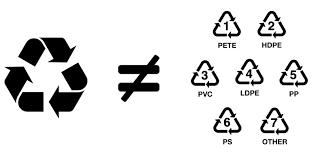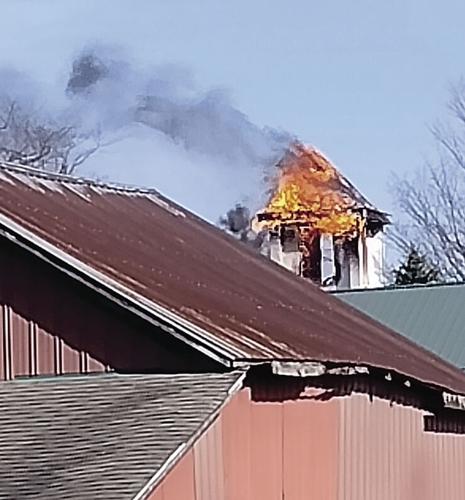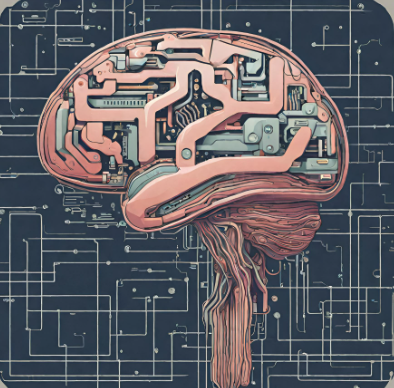Recycle, recycle, recycle?
February 9, 2022
Most people have seen and even used a recycling bin, but they don’t know all that much about the actual process of recycling. There are some basics; for example, place glass, paper, metal, and plastic in a specific box and it can be turned into something new. However, the recycling process is a bit more complicated than you may think. In reality, recycling can be very wasteful and only marginally profitable. This is due to a combination of misinformation, misuse, and lack of research in general. Here are some commonly misunderstood aspects of recycling and the truth behind them:
Glass: Glass can, in theory, be recycled endlessly without losing any quality. The problem lies in the U.S. recycling systems. Single stream recycling is quite common in the United States. It’s when all products intended for recycling are thrown into one bin and sorted at the facility. It’s easier for the average consumer, but it leads to fewer things being properly recycled due to contamination and the difficulty of sorting recyclables on an industrial scale. Depending on the facility, glass recycling is either simple and a great choice, or unlikely to work properly. Reducing waste and reusing glass items when possible is always a great idea, and when you do need to get rid of it recycling is still a good option. Avoid recycling loose broken glass, as some facilities have people assist in sorting recyclables and this could injure them.
Paper: Paper is pretty straightforward, but it too has some issues. Just like everything else, paper products should be clean if they are to be recycled. Greasy pizza boxes, for example, aren’t a great candidate to be recycled – but if the lid is clean, you can rip it off of the bottom to recycle it. There are different grades of paper that different centers accept. It’s a bit simpler than plastic, but doing research is always a good idea when you’re unsure. Sadly, some types of paper require harmful chemicals to be processed, and recycling is generally an energy intensive process. If a recycling center isn’t using clean power, it could be polluting the air more than creating new paper. Again, this doesn’t mean you shouldn’t recycle paper. The process is actually quite simple, and you can do it yourself at home without much cost!
Metal: Metal is generally pretty simple as well. In some cases it’s actually possible to sell scrap metal, which allows the metal to be reused and you to make a quick buck. There are, however, still some issues. Contaminated metals like motor oil cans and anything considered hazardous waste are not good options for recycling. Some metals are not able to be recycled due to toxicity like mercury and lead; they, like hazardous waste, need to be disposed of properly to avoid putting people in danger.
Plastic: Widespread plastic recycling, for the most part, is a myth perpetuated by plastic companies as a strategy to sell more plastic. In fact, plastic recycling isn’t even possible a frightening amount of the time. This sounds like a crazy conspiracy theory, but it’s actually more of an oversimplification.
In the spring of 1970, Senator Gaylord Nelson held the first Earth day. Twenty million Americans demonstrated, so it was clear that people were starting to care more about what happened to their trash. They saw the damage that single use plastics could do and started making changes to avoid them. Plastic companies saw that this negatively affected business and devised a master plan: Convince people that plastic isn’t that bad so they’ll keep buying it. They spent millions of dollars advertising for people to recycle their plastic and give it a new life. They made it seem like the environmentally conscious choice. It worked. People believed it and still do. To some extent, it’s true; you can indeed recycle some plastic a limited number of times.
On the other hand, many problems arise when one scrutinizes this pro-plastic-recycling ideology.
One of these issues is that only some plastic can truly be recycled. Those little recycling symbols on most plastic items are actually just indicators of what kind of plastic the item is made of. They were made to look like the symbol to trick people, but have some differences for legal reasons. One thing the symbols do is allow you to check if it can be recycled. Your local recycling facility should have some sort of list of which plastics are accepted for recycling. Types 1 and 2 are accepted in most facilities; types 3, 4, and 5 aren’t typically accepted, but some facilities can handle them; and 6 and 7 are almost never recycled. Some grocery stores, such as a local Walmart, will have special bins out for plastic bags which are usually made of type 4 plastic, but other than that, most plastic outside of types 1 and 2 never come anywhere near an opportunity to be recycled.
Furthermore, plastic can only be recycled so many times. This doesn’t necessarily mean you shouldn’t ever recycle plastic, it just means that it takes a bit more effort than just tossing something in the bin. Due to our current recycling methods, each time that plastic is recycled, it loses quality by a significant amount. When plastic is melted down for recycling, it degrades the chemical bonds that the plastic relies on for strength and structure. According to a 2018 National Geographic article titled “7 Things You Didn’t Know About Plastic (And Recycling)” the majority of type 1 and 2 plastics can only be recycled up to about three times before it must be downcycled or discarded. This means that even the plastics with the most potential for recycling are discarded relatively quickly – if they manage to make it that far.
A final conflict with plastic recycling is that this practice is simply not profitable for industrial production. It’s cheaper to make new plastic than it is to recycle old plastic, so the majority of companies just do that. Some plastic gets recycled, but most of it continues to fill our landfills and oceans. When in doubt, just try to reduce your plastic use in general whenever possible. That way, the difficult process of discernment and disposal can be avoided.
As has been stated, none of this means that you shouldn’t try to recycle. It may take a bit more effort than initially anticipated, but it’s still a good step to help the planet. With that said, recycling should never be the first thing you do. The saying goes; Reduce, Reuse, Recycle, not; Recycle, Recycle, Recycle. The first thing to do is reduce unnecessary waste. Avoid excessive packaging and look for options that can definitely be composted, reused, or recycled easily. The next thing to do is reuse what you can. Use old glass bottles as vases. Use plastic ice cream containers for plants or containers for sorting. Glass jars can be used as drinking vessels or storage. Many things can be repurposed as decorations with a little creativity. If you can’t think of a way to reuse something in a way that works for you, the internet is full of ideas for things to keep or turn into gifts. After you’ve exhausted your options and you just can’t think of a way to reuse something, then you should recycle it, or dispose of it properly if your local facilities can’t process it.













